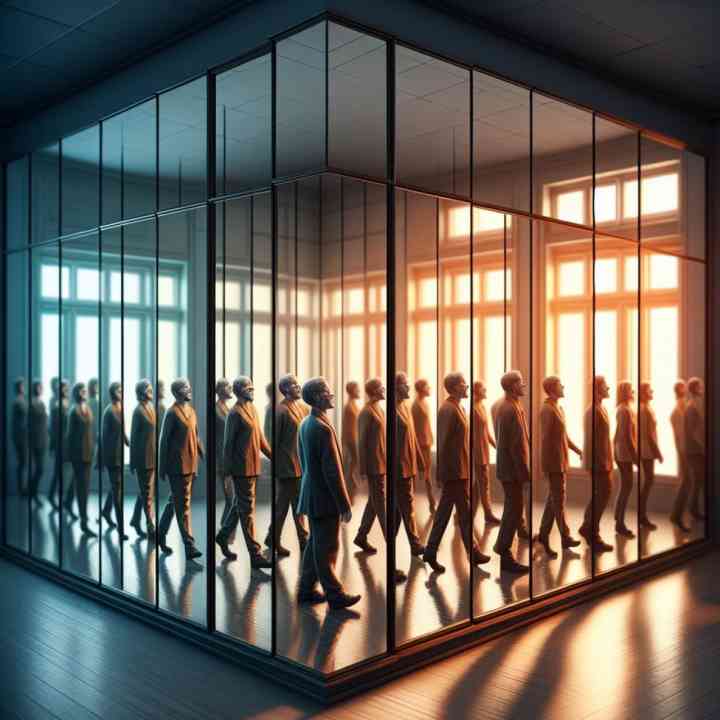The Equal and the Different
To provide a real basis for the idea of “originality”.

Editor's Selection
This article was motivated by an interesting note by Raúl Campuzano, in the seminar Tipología de Marcas of FOROALFA. In it, Raúl put on the table the concepts of “analogy” and “identity”, based on a text by Enrique Dussel. And these concepts directly compromise the idea of “originality”; a recurring idea in reflections on design.
To get straight to the point, it is necessary to start from two realities:
- Everything, absolutely everything, be it a natural fact or a work of human beings, is inscribed in one or another paradigm that associates everything that shares one or several characteristics. Uniqueness is not a fact of reality, and the brain does not conceive it.
- But nothing, absolutely nothing, is identical to any other member of its paradigm. Equality is an exclusively logical-mathematical category.
And this reality is within the reach of the human mind, which can grasp, simultaneously, the equal and the different in every real fact. To know an object is to inscribe it in the universe of its analogues and, at the same time, to detect its differences with respect to all of them. All waltzes are waltzes; but no two are alike. And this is key, since the genre (“waltz”) provides the guidelines for the interpretation of the piece (The Blue Danube). The identity of everything that exists is located at the point of intersection of these two axes: equality and difference.
And this is valid even for the same object. I do not know how many interpretations of The Blue Danube there have been to date, probably several thousand. Could we find two identical ones? Let us illustrate it with a contemporary fact. An orchestra records this waltz for a publisher and, the next day, performs it live, under the same baton. Shazam, which has memorized the recorded version, does not recognize it when listening to the concert. What happened? Quite simply, Shazam's acoustic memory is as fine as or finer than a music lover's ear; and the waltz that the system was hearing did not match the one that remained in its memory. Nothing is the same, not even to itself. And, if we insist on finding it, we have no choice but to look for it in the industrialized production, which transformed object into series. In other words, cheating.
All that has been said up to this point are pure truisms; but in the 20th century, the axis of equality began to be in crisis. From the great changes that took place in the arts, architecture and industrial production (which forced the emergence of design), the expression “cultural rupture”, among others, became generalized. It was intended to highlight the radical nature of these changes. In reality, it is only a metaphor which, if taken in its broad sense, leads to the error of supposing that in culture it is possible to produce “from scratch”. In culture, rupture is impossible. The notion of “cultural rupture” neglects one of those two axes.
At a meeting of the Board of Directors of ADG (the Barcelona graphic design group) with Milton Glaser, a colleague asked him for his opinion on “the new graphic languages”. Glaser –of whose creative talent no one doubts– answered: “new” and “language” are incompatible terms; for if the language is new, the message is not understood. An overwhelming truth: all languages mutate, but none is born from nothing.
In sectors of cultural production, their lack of familiarity with theoretical discourses (anthropology, linguistics, semiotics, history of culture...) and their restriction to colloquial discourse, has allowed arbitrary notions to flourish, more derived from will than from reason. And that will is propelled by the myth of “cultural progress”; a myth sufficiently dismantled from various aspects of the social sciences and philosophy.
In short –and taking up Campuzano's reflection– it is not a question of “singularity” but of “degree of singularity”. Excellent design products verge on the standard, they are inscribed in the “small difference”; and others, equally excellent, approach the unpublished, without ceasing to recognize “what they are”.
Both similarity and difference are inexorable characteristics. The talent of the creator resides in detecting the right middle ground in each case. In design, uniqueness is not a mandate but, on the one hand, an unavoidable result and, on the other, a “dosable” objective.
This article was originally written in Spanish and adapted for English using AI to facilitate global dissemination.
Professional Excellence
If you are looking for content with this level of rigor, you will be interested in our academic offer. Courses designed to meet the real demands of the profession.
View Academic OfferShare
Please value the editorial work by using these links instead of reproducing this content on another site.

Topics covered in this article
What do you think?
Your perspective is valuable. Share your opinion with the community in the discussion.
Comment now!


